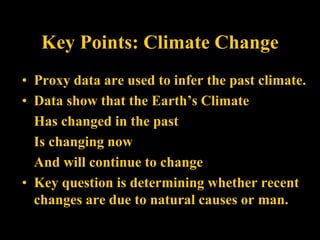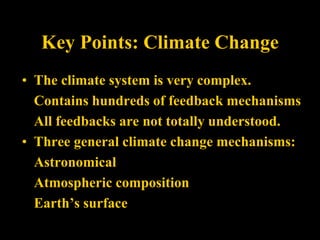Climate is classified based on temperature and precipitation patterns using the Koppen climate classification system. Climate change refers to significant shifts in the mean state or variability of the atmosphere over time. Evidence from paleoclimatology using proxies like tree rings and ice cores indicates the climate has changed in the past in response to factors like orbital variations, solar activity, atmospheric composition, and continental drift. Current climate change is increasing global temperatures, particularly in the Arctic, raising concerns about impacts like sea level rise.


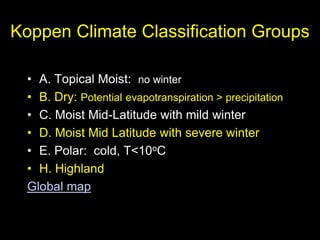

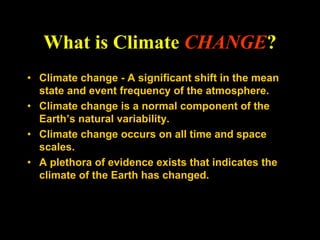


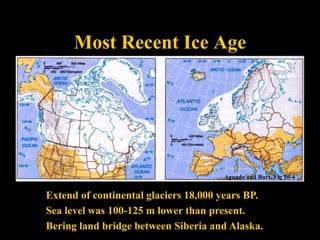




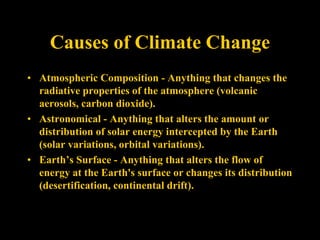














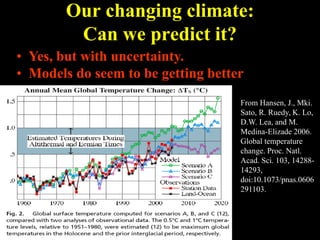



![Change in IR Emission to Space
• Notice that because of Earth’s greenhouse gases, 91%
(=64/70) [195/235 = 83%] of the IR emitted to space comes
from the atmosphere and only 9% (=6/70) [40/235 = 17%]
comes from the surface
• When GHG’s are added to the atmosphere, the altitude of
IR emission to space rises
• In the troposphere, air temperature decreases with altitude
• So the temperature of the emission to space decreases
• So the energy emission to space decreases because the
emission energy decreases with decreasing temperature](https://image.slidesharecdn.com/climateclimatechange-230316130014-d90c78d3/85/climate-climate-change-ppt-32-320.jpg)








